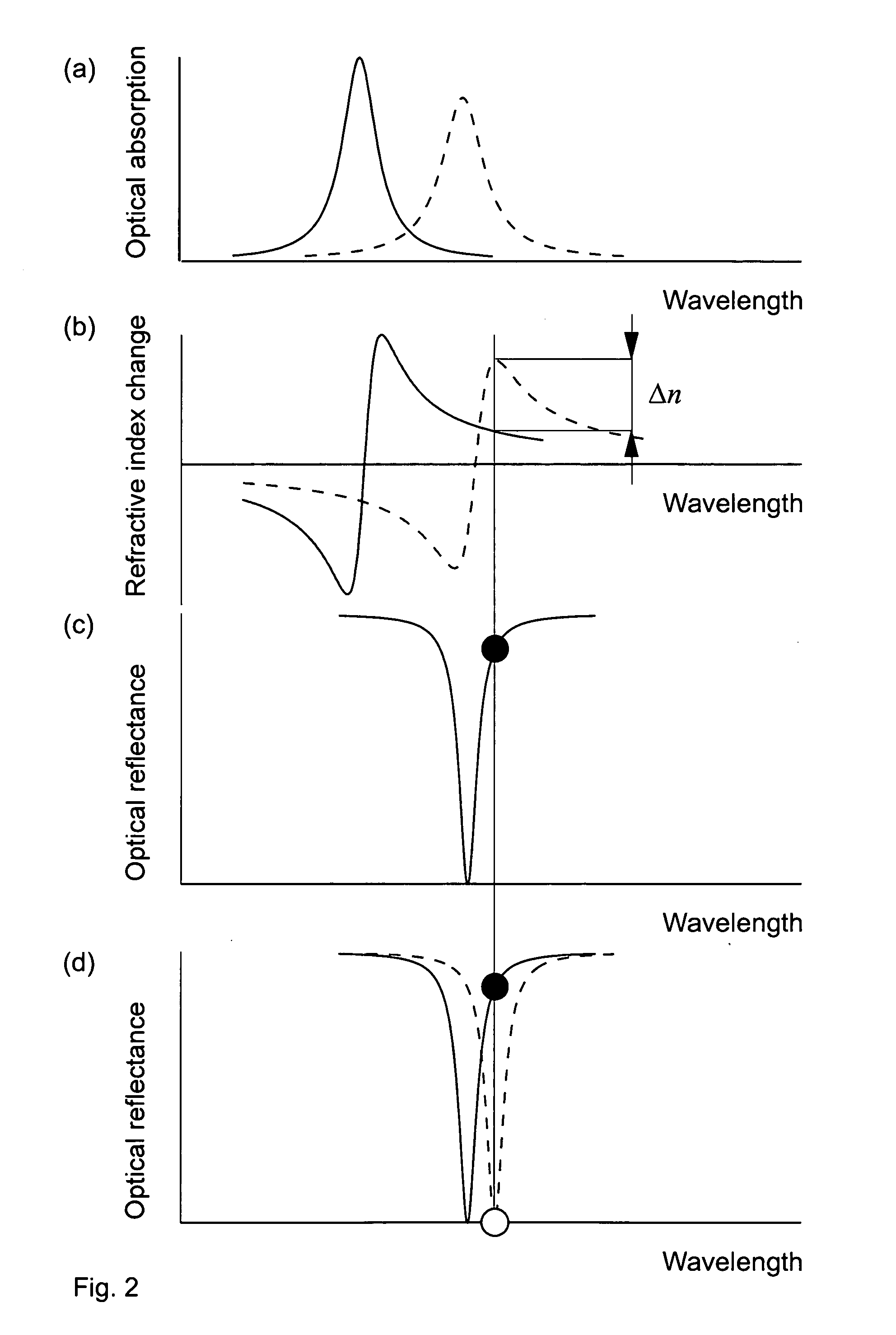Electrooptically Bragg-reflector stopband-tunable optoelectronic device for high-speed data transfer
a technology of optoelectronic devices and stopbands, applied in semiconductor devices, semiconductor lasers, laser details, etc., can solve the problems of overheating of the active region, saturation of relaxation oscillation frequency, and degradation of device stability, and achieve the effect of modulating the transmittance of multilayer interference reflectors
- Summary
- Abstract
- Description
- Claims
- Application Information
AI Technical Summary
Benefits of technology
Problems solved by technology
Method used
Image
Examples
Embodiment Construction
[0049]The present invention provides an ultrafast way to modulate the intensity of an optoelectronic device.
[0050]FIG. 1 shows a schematic diagram of a prior art electronically intensity-modulated vertical cavity surface emitting laser, invented by the inventor of the present invention. The device (100) includes a wavelength-tunable cavity with a modulating element and a cavity with light generating element. The device (100) includes a substrate (101), which is preferably n-doped, a first distributed Bragg reflector (102), which is preferably n-doped, a light generating element (110), a first current spreading p-layer (124), a second distributed Bragg reflector (120), which is preferably undoped, a second current spreading p-layer (151), a filter element (130), into which a modulator region is introduced, a first current spreading n-layer (152), and a third distributed Bragg reflector (140), which is preferably undoped. The filter element (130) includes a weakly p-doped or an undope...
PUM
 Login to View More
Login to View More Abstract
Description
Claims
Application Information
 Login to View More
Login to View More - R&D
- Intellectual Property
- Life Sciences
- Materials
- Tech Scout
- Unparalleled Data Quality
- Higher Quality Content
- 60% Fewer Hallucinations
Browse by: Latest US Patents, China's latest patents, Technical Efficacy Thesaurus, Application Domain, Technology Topic, Popular Technical Reports.
© 2025 PatSnap. All rights reserved.Legal|Privacy policy|Modern Slavery Act Transparency Statement|Sitemap|About US| Contact US: help@patsnap.com



